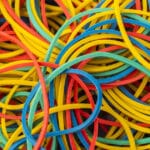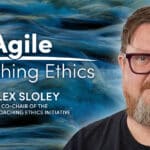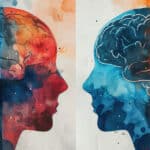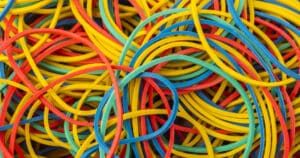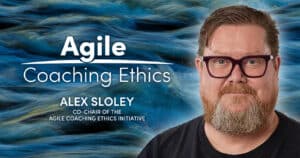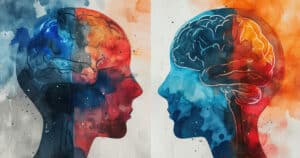Sustainable development has always been in the Agile Principles, and, though this was mainly focused on creating a consistent pace of value delivery by not pushing humans too quickly, it also applies to the larger picture of how we work to benefit the ecosystem we deliver to.
In other words, building great solutions while not harming humans or abusing resources in order to remain in homeostasis with the ecosystem is beneficial to stakeholders and society.
What is sustainable Agile product development?
At the highest level, we can define it as the approach a team or company takes to develop products in order to create positive economic, social, and environmental outcomes. Those outcomes are achieved by setting sustainability product goals and putting in the right level of development procedures, policies, and practices that enable the team to hit those targets. The characteristics of those outcomes can be anything from reduced power consumption, less production waste, to even a better work-life balance for the product development team. This effort is applied throughout the entire lifecycle from early ideation to end-of-life.
The cool thing is that Agile practices work directly with sustainability. For example, User Stories could be used to capture the product outcomes you want to achieve as a part of your normal planning process. Then, with each product iteration, you can check and adjust using a Plan-Do-Check-Act (PDCA) process. Other policies may also need to be established to look at your supply chain to create sustainability guidelines for buying external parts. In some cases, teams may need to look at things like the impact of the product after it is in use, when the product hits end-of-life, and tracking the long term economic, social, and environmental value that the product creates.
Perhaps the most challenging part about getting started is establishing the targets and the future state of how you want your stakeholders to look at you as a company. This all starts with creating a sustainability vision that motivates the mindset of your company towards that larger vision.
Sustainability vision
Perhaps one of the best sustainability visions I have seen was done by John Deere back in 2015. They outlined a larger challenge to not just build tractors but to feed the world. This gave a clear social anchor to the work that development teams were doing. The simple shift from being a farm equipment manufacturer to being part of the greater good enabled them to design innovations that helped to yield more nutrition per acre of land. Furthermore, this reframing helped to motivate stakeholders and improve the overall company brand value.
Writing your own larger-than-yourself vision is a great way to kick off your sustainability effort within your business. Socializing, collecting feedback, and iterating on your vision should be your goal. The conversations start to help build goodwill and attract partners to what you want to achieve. In all cases, it serves to educate and help to shift the mindset of the people delivering for your business.
In it for the long game
As I said in the opening, the concepts of sustainable development have been a part of the Agile principles from the start.
In the smaller sustainability context, as it applies to sustainability within development practices and policies, it comes down to establishing incremental proofs of value that you are making forward progress on becoming more Agile as an organization. It all starts with the Agile mindset and a strong vision that shows the world that you are in it for the long game.
Building the right systems around the larger sustainability context helps to create higher quality and value—not just from the vector of a good product, but also in the long-reaching positive impacts your product can have on social, economic, and environmental areas. This, in turn, creates stakeholder loyalty to your brand because people see you as a force for good.
Supporting Agile Adoption Workgroup and ACN
This article is based on the discussions of the Agile Alliance Supporting Agile Adoption Workgroup. I want to thank Hendrik Esser, Jutta Eckstein, Eric Abelen, Bjarte Bogsnes, Jen Coldewy, Marcin Floryan, John Buck, and Elena Vassilieva for their challenging insights. If you would like to hear part of our conversation about organizational design, please listen to this special edition of the Agile Coaching Network (ACN) podcast.



